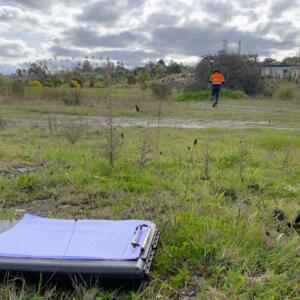Landserv was engaged to provide environmental advice and prepare a Site Remediation Strategy for a site in regional Victoria that was heavily impacted by historical mining. Rehabilitation of the site is proposed in support of its development for housing, open space and the restoration of a waterway corridor in partnership with traditional owners of the land.
Landserv’s response to the brief was innovative, with a focus on sustainable remediation to make the site suitable for its intended use and meet traditional owner goals for the land.
Landserv was engaged to provide environmental advice and prepare a Site Remediation Strategy for a site in regional Victoria that was heavily impacted by historical mining. Rehabilitation of the site is proposed in support of its development for housing, open space and the restoration of a waterway corridor in partnership with traditional owners of the land.
Landserv was already familiar with the site, having previously completed an environmental and geotechnical desktop review / site inspection and report to advise the Victorian Government on its suitability for development.
Initially Landserv provided environmental advice and consulted with EPA Victoria and Council to confirm environmental audit and planning approval pathways that would apply to remediating and developing the site. Then the team completed grid-based non-intrusive testing (sensitive to traditional owner preferences) across the whole 13 ha site. The testing was for surface soil heavy metal concentrations, using X-ray fluorescence (XRF) and survey-accuracy GPS technologies. The data from the XRF survey and previous investigation reports was combined to produce ‘heat maps’ depicting the levels and distribution of contamination.
Landserv then completed a Remediation Options Analysis and presented and consulted with traditional owners, culminating in further analysis of the preferred remediation option for the site, together with cost estimated for clean-up.
Landserv’s Site Remediation Strategy and preferred approach for the clean-up was innovative and focused on a sustainable approach to meeting the traditional owners’ goal of ‘making their upside-down country healthy again’, within Victoria’s regulatory framework for contaminated land and environmental auditing. Innovations included risk-based placement of mildly contaminated soil in areas where the land use would not be affected, placement of higher level contaminated soil beneath constructed infrastructure (buildings) and soil repositories for contingency use only if required. The sustainable remediation strategy ensured the protection of human health and the environment, while avoiding large scale relocation of soil contaminated with arsenic from historical mining.
Input to the strategy, arranged by Landserv as part of its multidisciplinary work package, included the completion of a specialist Human Health and Environmental Risk Assessment (HHERA), as well as a detailed geotechnical engineering review of the opportunities and challenges due to former mineshafts and mining spoil across the surface of the site. The HHERA served to provide risk based remediation criteria for cleaning up the site, which in turn contributed to the sustainability focus of the remediation strategy, while protecting human health and the environment.
In addition to the HHERA, traditional owner goals and sustainability considerations, Landserv’s remediation strategy responded to the site setting with a waterway passing through the site and colonial / mining heritage features identified by previous investigations of the site.
Landserv’s completed strategy and remediation cost estimates fed into an overall Concept Master Plan and Business Case for the proposed development.
Benefits:
- A sustainable approach to remediating a large site for development utilising risk-based placement of impacted soil where any residual risk to human health and the environment is minimised or eliminated.
- A sustainable strategy to meet traditional owner goals, within the Victorian environment and audit regulatory framework.
- Input to the conceptual masterplan and cost estimates as input to Government’s business case for the proposed development.
- Engagement with government agencies to establish the planning and environment approvals pathway.
- Multi-disciplinary project management incorporating expert risk assessment and geotechnical advice.
This project included the following tasks:
- Environmental audit and approval pathway communications with EPA Victoria and Council;
- Non-intrusive testing of surface metals concentrations using X-ray fluorescence and survey accuracy GPS technologies;
- Desktop review of existing information;
- Remediation Options Analysis;
- Presentation and engagement with traditional owner project partners;
- Preparation of a Sustainable Site Remediation Strategy;
- Development of Site Remediation Cost Estimates;
- Environmental advice, workshops and meetings;
- Geotechnical Advice (sub-contracted);
- Human Health and Ecological Risk Assessment (sub-contracted).



